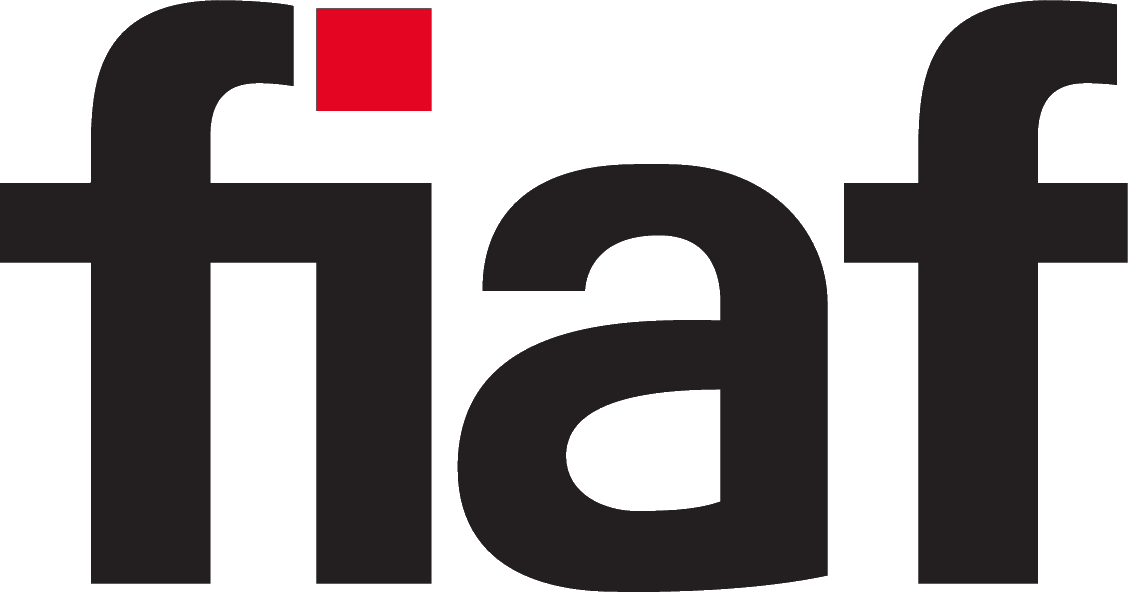 Provody na l'dine (dir. P. Kats and I. Lazarchuk, 1938). Courtesy of the Bundesarchiv.
Provody na l'dine (dir. P. Kats and I. Lazarchuk, 1938). Courtesy of the Bundesarchiv.
Decolonizing Film Catalogues:
Recommendations and best practises by the FIAF CDC on the representation of Ukrainian film titles and cast/credits produced during the Soviet Union
Note that the information below is also available as a downloadable PDF file.
Foreword
The FIAF Cataloguing & Documentation Commission (CDC) has been approached with cataloguing questions in regards to the representation of Ukrainian films during the Soviet Union. While these were produced under a historical country, many of our colleagues would like to make it transparent that these films were made in what is now Ukraine. We think that questions like these fall under the broader topic of “Decolonizing Film Catalogues” or “Decolonizing the Archive”. To name only one example: the topic is also relevant for other post-soviet countries, like, for instance, Kazakhstan, Latvia, Estonia etc.
We have come to the conclusion that it makes sense for our cataloguing practice to work with identifiers and to include language and spelling variants in our databases when feasible. It remains the policy decision of an institution or festival to choose a preferred name for display on online platforms and/or in festival catalogues. This decision should not be taken lightly and should be informed by the opinions and experiences of those affected.
We have invited a group with different backgrounds to work with us on a paper on how to deal with Ukrainian films. I would like to thank Natasha Fairbairn, Natascha Drubek, Circe Itzel Sanchez, Anna Bohn, Ivan Kozlenko, Paul Duchesne and Oleksandr Teljuk for their invaluable comments and for sharing their experiences. We have included best practices in place at the Dovzhenko Center (marked in this text as italics). I would like to invite anyone for comments at cdc@fiaf.org.
Adelheid Heftberger (Head of the FIAF Cataloguing & Documentation Commission)
14 December 14 2023
1) On the transliteration of Cyrillic
The international system for transliteration of Cyrillic letters to the Latin script (also called romanization) is the so-called scientific transliteration. The scientific transliteration system is roughly as phonemic as is the orthography of the language transliterated. The deviations are with щ, where the transliteration makes clear that two phonemes are involved. A table can be found here.
Represent every letter (including the Ukrainian soft sign) when transliterating.
If using the English transliteration, use the Library of Congress Romanization.
If using automatic transliteration tool, use original language and script as starting point and an internationally recognized standard for scientific transliteration: e.g.
- ALA /LC (American Library Association / Library of Congress https://www.loc.gov/catdir/cpso/romanization/russian.pdf
- BnF (Bibliotheque nationale de France) http://editions.bnf.fr/guide-pratique-du-catalogueur
- British Library https://www.bl.uk/help/search-for-cyrillic-items
- ISO 9:1995 https://de.wikipedia.org/wiki/ISO_9
- Libraries in Germany DIN 1460
Best practice from the Dovzhenko Center:
In use is the Ukrainian national standard BGN/PCGN 2019 (https://geonames.nga.mil/geonames/GNSSearch/GNSDocs/romanization/ROMANIZATION_OF_UKRAINIAN.pdf).
2) Representation of film titles
Check if the film was produced by a Ukrainian studio and/or had a distribution in the Ukraine and/or had a Ukrainian title or title of another language (e.g. ethnic minority) . Don’t presume that any title in Ukrainian would always be the main preferred title, as this may not always be the case. If in doubt, give titles found on the print as well as titles from reliable secondary sources with references. Best would be to refer to the Ukrainian colleagues from the Dovzhenko Center. Here is what they wrote down as best practice:
All the titles of the Ukrainian productions since 1922 (introduction of the Ukrainization politics in Ukraine) till nowadays should be given in Ukrainian transliteration first - regardless of the language of production.
While Ukrainian was the first language in most film productions from 1922 to the 1950s, beginning from the mid 1950s on we can see a dramatic decrease of Ukrainian language productions to the zero level in the late 1980s as the outcome of the politics of forced Russification in Ukraine. It led to the situation when most of the films of the 1960-1980s were produced in Russian. It might be acceptable for such films to use both - Ukrainian and Russian titles.
If using film catalogues and/or databases from the Soviet Union published by central State archives like Gosfilmofond of Russia as a source of reference, note that titles and names are usually given in Russian language and Cyrillic script only.
Helpful websites:
Examples:
- Original title in Ukrainian language: Поздоровляю з переходом/Pozdorovljaju z perechodom (scientific transliteration). Print in Bundesarchiv only had the title in Russian: Поздравляю с переходом/Pozdravljaju s perechodom.
Decision: Catalogue Ukrainian title as original title and Russian title as alternative title. Include German translation as translated title.
- Original Title: Evge (Language: Crimean Tatar); Ukrainian language, cyrillic and romanized script: Додому, Dodomu. English distribution title: Homeward. Production country: Ukraine. Year of release: 2019. Directed by: Nariman Aliev. Ukrainian language, cyrillic script: Наріман Алієв.
- Original title in Ukrainian language: Тіні забутих предків (transliteration: Tini zabutykh predkiv; Russian title, cyrillic and romanized script: Тени забытых предков; Teni zabytych predkov. English language title: Shadows of Forgotten Ancestors; German language titles: Schatten vergessener Ahnen; Feuerpferde. Explanation: The original version is the Ukrainian language version, original title: Тіні забутих предків). Users may search for the title in other languages and scripts. Recommendation: use authority data for film works, for example Q1409627 (Wikidata).
Catalogue on-screen title if possible, transliterated in the scientific transliteration or transliteration of your choice.
While during the Ukrainization period (till 1935/36) all films were released in Ukrainian, from the mid 1930s onward the first versions were mostly produced in Russian (with rare exceptions) with Ukrainian dubbed versions attached. In 1973-1989 Russian became a production language in almost all cases with only a few films later dubbed in Ukrainian.
If you translate titles into your own language or take titles in other languages from secondary sources, make sure to give references in your database, e.g. use the title type “translated title” if you can, or reference for example the Wikidata identifier as a source. Note, that in Wikidata there is considerable confusion over whether language labels are to represent the title translated into each language, or the title as it was released in the country most closely related to that language.
Add other titles in Ukrainian transliteration if applicable (see above).
3) Cataloguing cast and crew
The choice of using the Ukrainian name form is political rather than linguistic. Most Ukrainians identifying themselves as Ukrainians use the Ukrainian form regardless of their primary language or ethnicity. As cataloguers, we can’t assume what people prefer or how they identify.
We can, first of all, catalogue what we see on our items. Use a credited name field to use in cast/credits of works in order to reflect what was in on-screen titles; and a preferred/non-preferred structure of names within your own person and organisation authority records, for example to add Ukrainian transliteration for Ukrainians with the aim to make this visible.
Thus, use, if possible, Wikidata (or other universal) identifier or link to Wikipedia: І́гор Андрі́йович Са́вченко, preferably identifiers from a trusted Ukrainian institution, like the Dovzhenko Center.
Examples:
- І́гор Андрі́йович Са́вченко. Wikidata https://www.wikidata.org/wiki/Q2069641 ; Wikipedia: І́гор Андрі́йович Са́вченко.
- Paradžanov, Sergej Iosifovič. Authority data: German Integrated Authority File GND: http://d-nb.info/gnd/119251302 ; LC: https://lccn.loc.gov/n79007165
Best practice from the Dovzhenko Center:
We give all the names of the crew (except those invited from other republics) in Ukrainian transliteration. We use Russian transliteration for the names of Russian actors / crew members involved in Ukrainian productions, and we use the same rule for those Russian actors / crew members who were born in Ukraine but active mostly in Russia and considered Russian actors.
In some exceptional cases (for instance when the person was active both in Ukraine and Russia/ other republic) we use conventional Russian transliteration for those considered rather supranational than Ukrainian / Russian: Sergei Paradjanov, Mark Donskoy, Dziga Vertov. But for example Ihor Savchenko or Mykola Shpykovskyi for those who were born and / or active both in Ukraine and Russia but invested mostly in Ukrainian culture and have rather Ukrainian national than international influence and recognition.
4) Cataloguing county of reference
Use linking with georeferencing data such as GeoNames for place/location of production company or for indexation of film location to enable findability of films produced in film studios in Kyiv or Odesa with the search term “Ukraine” .https://www.geonames.org/ . In this way, it is possible to avoid manifesting or perpetuating geopolitical facts. If adding country names is necessary, here are some recommendations and options:
a) Use VIAF, authority records and ISO codes for countries whenever possible
b) Retain the old geo-political countries which are given in the film. For example: if a film was made by a Ukrainian filmmaker and company in say the 1960s then it would be designated as having a production country of the USSR, since at that time Ukraine was part of the USSR. If it had been made pre-1917 it would be designated as having the country Russian Empire (or Imperial Russia).
c) Add Ukraine as an additional country, preferably as an ISO code (https://www.iso.org/obp/ui/#iso:code:3166:UA). Under ISO this technically pertains to the country post-1991, with use of the Soviet Union/USSR before then. Under LC/MARC though, country Ukraine “covers both the Ukrainian SSR (1917-Aug.24 1991) and the newly independent Ukraine (25 Aug. 1991- )”. [It should be noted that 1917 is historically inaccurate: The Ukrainian SSR was established only in 1919].
d) Create a country for the Ukrainian SSR. There are no ISO codes for separate Soviet Socialist republics except for Byelorussian SSR.
Best practice from the Dovzhenko Center:
We use the country name - Ukrainian SSR for the productions dated 1922-1991. If you prefer to use both titles - USSR as the first country and Ukrainian SSR as an additional country, you have to anyway use them vice versa when referring to the VUFKU productions (1922-1930) as during this period Ukrainian film production didn't subordinate to the central government bodies and was solely ruled and financed by Ukrainian autonomous government and for 1988-1991 productions when the Goskino of USSR authority was already cancelled in Ukraine. Thereby we usually use only one title - Ukrainian SSR for those two periods.





